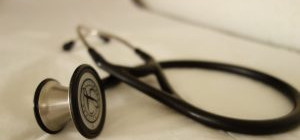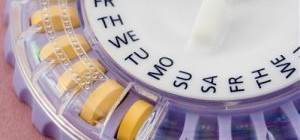 Proper hygiene and sanitation are two of the most important factors in keeping hospitals and other healthcare facilities safe for everyone who uses them. Clean and sterile premises—as well as staff members that observe proper sanitary practices—don’t only inspire confidence among patients and other stakeholders, they’re also key to preventing the spread of communicable diseases and hospital-acquired infections.
Proper hygiene and sanitation are two of the most important factors in keeping hospitals and other healthcare facilities safe for everyone who uses them. Clean and sterile premises—as well as staff members that observe proper sanitary practices—don’t only inspire confidence among patients and other stakeholders, they’re also key to preventing the spread of communicable diseases and hospital-acquired infections.
Patients who are immuno-compromised and vulnerable to infection—such as the newborn, the elderly, and those who have undergone severe trauma or intensive surgery—are the ones who can benefit the most from keeping a high standard of hygiene and sanitation in hospitals. Thus, it is of utmost importance to ensure that hospital environments are properly cleaned and disinfected all the time.
The importance of sterilized tools
Using surgical tools with sterilizable mini motors is one such way of keeping things clean and sterile in a hospital or healthcare facility. As these tools are often used in life-saving surgeries, they can be considered as a primary source of hospital-acquired infections and communicable diseases, especially if they aren’t properly cleaned after they are used.
Therefore, the tools need to be able to withstand intense sterilization methods that can effectively kill any pathogenic microorganisms that may have contaminated them. These include procedures such as autoclaving, wherein alternating positive and negative pressures, as well as high-temperature steam, are used to clean tools. This ensures proper sterilization, making the tool absolutely safe to use on the next patient.
Autoclavability is key
Obviously, autoclaving presents a risk of irreparable corrosive damage to tools with delicate motors or circuitry in them, mainly due to the moisture and heat involved. But if the motors in the surgical tools being cleaned were autoclavable—meaning they are built to be able to withstand those elements and continue working as normal, even with repeated sterilizations—then the risk of damage would eliminated, alongside the risk of causing contamination or infection. Thus, it’s easy to understand why sterilizable motors are essential components of motorized or automated medical equipment.
That said, in which modern medical tools can we typically find autoclavable or sterilizable motors? Here are some of the more important ones.
Orthopedic Surgical Reamers. This handheld surgical tool is designed mainly for use in orthopedic surgical procedures that require drilling and reaming, such as intramedullary nailing, complete reconstruction of joints, and placement procedures of bone screws and guide wires. Drilling in this context means to create holes in human bone and tissue, while reaming widens holes already made to more easily accept screws or other implements.
Powered Neuro and Spine Drills. This slim and handheld tool is designed to drill into very sensitive and delicate areas of the human body, such as those of the spine and other parts of the nervous system.
Large Bone Orthopedic Saws. This surgical tool provides the high torque necessary to safely and quickly saw through large, thick bones, making it a regular for life-saving emergency procedures such as amputating limbs, opening the human sternum for open-heart surgery, and more.
Arthroscopic shavers. Arthroscopic shavers are used to help facilitate arthroscopy, a minimally invasive surgical procedure that involves the examination or repair of major or delicate joints such as the wrist, the knee, and the hip. They are used in the cutting, drilling, and re-sectioning of soft tissue.
Surgical robots. This highly sophisticated technological tool is a huge robotic assembly that helps surgeons perform extremely challenging and delicate surgical procedures, often involving the heart, brain, or nervous system, with even more precision.
Powered plastic surgery devices. These tools are used in the cutting, shaping, and re-sectioning of human skin, bone, and soft tissue for aesthetic purposes.
Dental drills. Dental drills and other dental tools are used to drill into live tooth enamel as well as to resection delicate gum tissue. As any infection in the mouth or teeth can cause the patient considerable pain as well as morbidity, the sterilization of such tools are essential.
Indeed, sterilizable and autoclavable tools are essential in keeping surgeries and other medical procedures safe and sanitary. Powered by motors that can withstand the elements, these tools can be repeatedly sterilized to ensure not only the protection of patients but also to provide maximum return on investment for medical facilities that pay the cost to acquire them.







